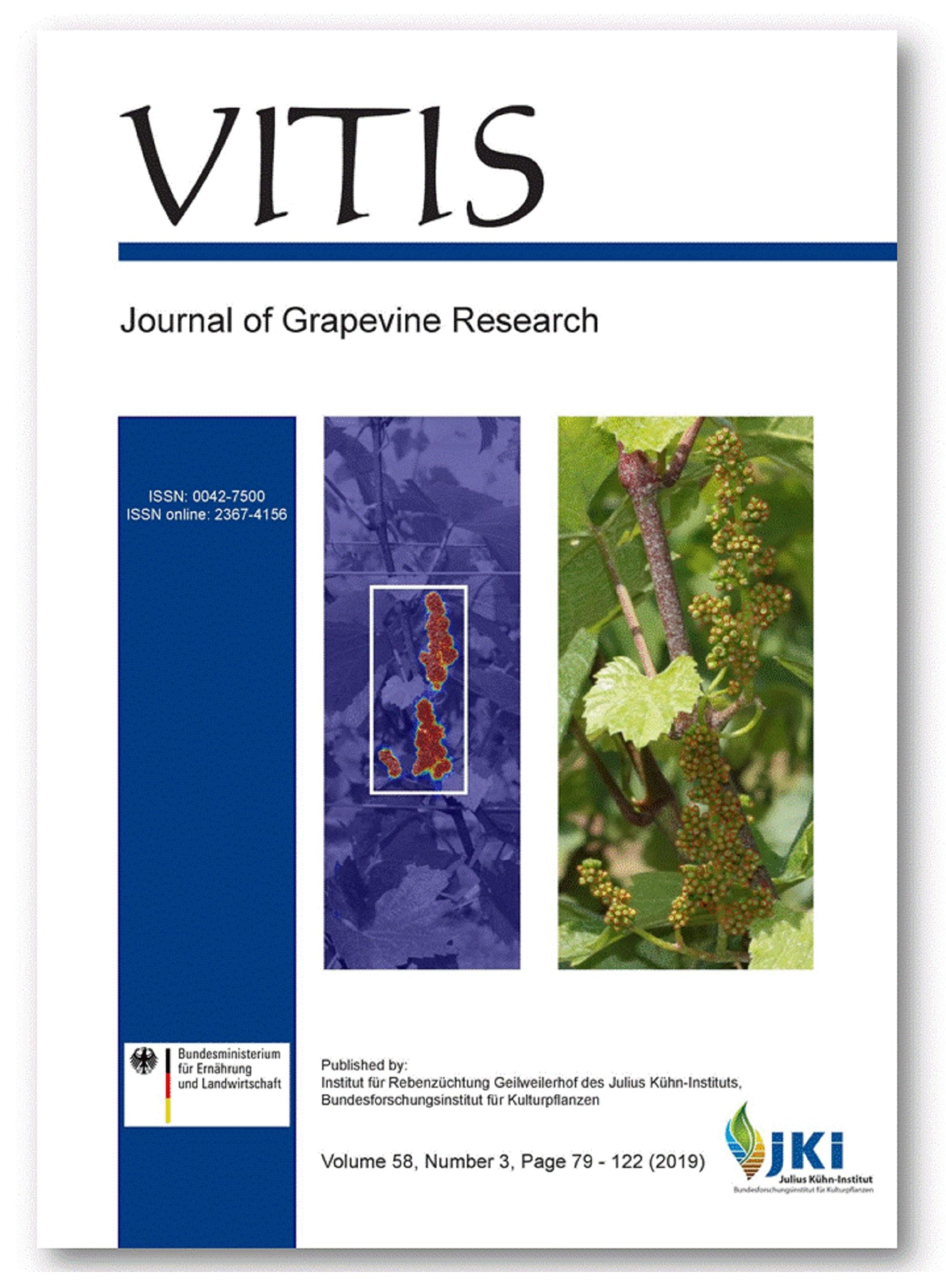Characterisation of different GLRaV-3 variant infections by determining virus concentration ratios and miRNA expression profiles
DOI:
https://doi.org/10.5073/vitis.2019.58.79-86Keywords:
virus concentration ratios; grapevine leafroll disease; microRNAs; RT-qPCR; 'Cabernet Sauvignon', grapevine leafroll-associated virus 3Abstract
Grapevine leafroll disease (GLD) is present in all grape-growing regions of the world and is considered the most significant grapevine viral disease. Grapevine leafroll-associated virus 3 (GLRaV-3) is considered the primary cause of GLD and in South African vineyards five genetic variant groups (I, II, III, VI and VII) have been confirmed. Biological distinctions between GLRaV-3 variants have not been fully validated. By characterising virus concentration and stress-responsive microRNA expression in GLRaV-3 infected plants, this study aimed to glean a better understanding of the possible biological distinctions between GLRaV-3 variants. Quantitative reverse transcription PCR was utilised for virus concentration ratio (VCR) determination and miRNA quantitation in GLRaV-3 positive and negative grapevines grown under greenhouse and field conditions. This study found statistically significant differences in VCRs in plants singly infected with different GLRaV-3 variants. Interestingly, no difference in mean VCRs were observed between data sets, despite notable differences in plant age, duration of GLRaV-3 infection, scion/rootstock combination and growing conditions. Several miRNAs showed statistically significant expression modulation between infected and healthy samples. miRNA expression between data sets varied substantially and a greater overall miRNA response was observed in plants with more established GLRaV-3 infections. The lack of significant differences in mean VCRs between data sets, coupled with the consistent modulation of certain miRNAs in plants that have likely been infected for longer is a promising result. This finding could indicate that successful inhibition of further virus replication by plant defence mechanisms occurred, and that these miRNAs are implicated in this response.
Downloads
Published
Issue
Section
License
The content of VITIS is published under a Creative Commons Attribution 4.0 license. Any user is free to share and adapt (remix, transform, build upon) the content as long as the original publication is attributed (authors, title, year, journal, issue, pages) and any changes to the original are clearly labeled. We do not prohibit or charge a fee for reuse of published content. The use of general descriptive names, trade names, trademarks, and so forth in any publication herein, even if not specifically indicated, does not imply that these names are not protected by the relevant laws and regulations. The submitting author agrees to these terms on behalf of all co-authors when submitting a manuscript. Please be aware that this license cannot be revoked. All authors retain the copyright on their work and are able to enter into separate, additional contractual arrangements.



